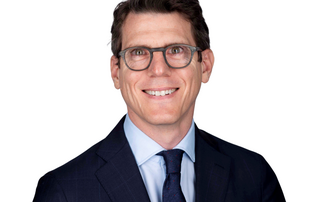Eliminating risk entirely is not the aim of investing, nor should it be. Without taking some risk, investors reduce the ability to achieve the returns they expect. Smart investing is more about managing risk and giving clients reassurance that they're taking the risks and the exposures that they are comfortable with.
You can measure and evaluate risk in a number of ways; it could be maximum drawdown, it could be value at risk, it could be standard deviation, currency volatility or portfolio diversification. The key thing is to listen to your own clients and explain risk to them in a variety of different ways in order to give clients reassurance that they're taking the risks and the exposures that they intended to take.
As part of our quarterly portfolio barometer of trends in the UK adviser space, we can look at historical data in order to analyse risk at the high level and then dig down to see what's going on within portfolios at a more granular level. By segmenting that data we can see, on a quarterly basis, where the shifts in asset allocation are taking place across conservative, balanced and aggressive portfolios.
For example, currency volatility has increased over the last three years - particularly in 2016. We believe this is an area that Investment Committees are going to have to increasingly focus on as it's a bigger influencer on what's driving risk and return in portfolios. It's about building portfolios that can withstand anything that the markets throw at them. We've had relatively low volatility over the last three or four years but there always remains the possibility of a return to the risk environments we saw in 2008 and 2009. If that happens, you need well diversified portfolios which allow you to manage risk and then take opportunities when the markets do move around. As the old adage goes, it is always best to fix the roof while the sun is still shining.
As Hollie Briggs from Loomis Sayles, one of Natixis's affiliated investment managers says, "One of the biggest risks you can take is not understanding the company you're owning. Taking the time to get to know companies, making sure they meet stated criteria set is important. If we accept that only about 10% of companies can maintain abnormal growth rates for more than four years, it's important to look for sustainable growth drivers, which include structural changes and secular trends. It's equally important to get stock at the right price. Risk is not necessarily volatility, it's overpaying for an asset. If you pay too much for a stock, you've added risk to your portfolio."
A challenge for many investors in recent years has been how to identify genuine sources of diversification within their portfolios in order to manage risk. We see high correlations among equity markets around the world, so accessing equities internationally has not had the diversifying potential that it once had. Plus, given where we are in the interest rate cycle currently, there are concerns about how successfully bonds, particularly long-duration Government Bonds, can play their traditional role of ‘risk reducer' in a balanced portfolio.
Liquid Alternative investment strategies such as Managed Futures or Equity Market Neutral, can be effective diversifiers in client portfolios and offer the potential to help manage risk, as well as the ability to provide significant positive returns during periods of market crisis. Specifically, Managed Futures are a way to gain access to non-equity asset classes such as currencies, commodities and interest rates, as well as the flexibility to be short or long, depending on the trends that managers are seeing in the markets. It's a proactive approach which takes into account market volatility and correlation, regardless of whether they are high or low, to target a more consistent and absolute level of risk.
Ultimately, risk is about portfolio construction. As we head into 2017, a portfolio should no longer be viewed as just a collection of stocks and strategies. It's more a question of getting an equilibrated portfolio in terms of managing risk over time and ensuring clients not only have a better understanding of risk, but that they are taking the risks and exposures they are comfortable with.
FOR PROFESSIONAL INVESTMENT ADVISERS ONLY and should not be relied upon by retail investors.
This article is for information purposes only and should not be construed as investment advice. The analysis and opinions referenced herein represent the subjective views of the individual as of 1 December, 2016. They are subject to change at any time based on market and other conditions. There can be no assurance that developments will transpire as forecasted. Past performance is no guarantee of future results. Investing involves risks including the risk of loss, investment risks exist with equity, fixed-income and alternative investments. Sophisticated and aggressive investment techniques such as leverage, derivatives, and short-selling can magnify a gain or loss. Issued by NGAM UK Limited (One Carter Lane, London, EC4V 5ER), which is authorised and regulated by the UK Financial Conduct Authority (register No. 190258











